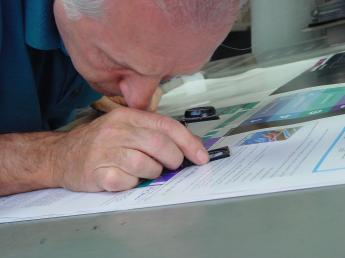
How do you hire right? When you receive an overwhelming response to a job application, it is difficult to sieve the good from the bad applicant. There are many ways to refine your employee search. Let`s talk about effective hiring techniques. As there are several hiring techniques available, you have to find what best suits your organizational and personal needs. The trick is in finding innovative ways to make your hiring techniques scrutinize the personal profile of your candidates.
Organizations who follow good HR practices should never hire at the eleventh hour. Deadlines and time crunches invariably find a way to seep into the decision making process of recruitment. Hiring should be an ongoing process, where talent is brought in early into the organization and developed for future business prospects. However, if situations present unforeseen business challenges that require quick hiring, then it is safer to hire ex employees with a proven track record. Why? Ex employees have a comfort equation with the organization and the learning process is not prolonged nor resource intensive. Employees who return to the organization (after a failed adventure) have greater loyalty and realistic expectations from the organization.
Screen employees judiciously. When scrutinizing bundles of job applications, make sure that you don`t reject indiscriminately. Hold on to applications that may or may not match your expectation levels. Reject only if they fall short of minimum standards set by the organization. Sort the application forms in the priority order, so that you know which ones to interview first.
Resumes can be very misleading or very informative depending on how you choose to read it. Many times, employers are bedazzled by the gamut of activities undertaken by the job applicant. But a shrewd employer would always try to read the fine print in between the lines. If you want to know your employee`s personality, take a closer look at his past records. Find out more about his interpersonal relations, his social status, his relations with family and friends. You will get a lot of hints about his personality from these relations. His past helps you forecast his future with the organization.
Many HR executives tell me that it is tough to crack a person during an interview. Applicants go through in-depth interview preparation. Their answers are so convincing and endearing that it is tough to see through their con-job.
My take on interviews is that an interview is the platform where both parties put their best foot forward. If the interviewee has done a thorough job of preparing for an interview, that is good. It means that he takes his job seriously. A person who cannot package himself well when he is selling his skills is not worth the job.
However, if an interviewer is unable to penetrate through the exterior, then the interviewer has not done his job well. Effective interviews can bring out every hidden trait of employees that influences the employment decision. Remember, that an interviewee can outguess most of the questions you can ask. The trick is to ask unexpected types of questions that throw the applicant off guard. In fact, the less predictable you make the interview format; the more likely you are to truly understand your interviewee.
Observe every verbal and non verbal signs that the interviewee communicates. Sometimes an applicant gives a lot away with small gestures that speak volumes about his persona. Notice his shoes, his bag, his personal etiquettes and manners. If possible, escort him to the door or to his car. A lot can be revealed even at the exit stage. For instance, an ink blotch on a part of his sleeve can tell you a different tale than his crisply ironed shirt. When you escort your applicant to the door or out of the premises, many times the applicant puts his guard down and eases off to speak unhindered. This information may be more meaningful than the one you received in the last hour.
Finally, make a serious reference check. Find out from past employers or referrers specific information about the applicant. While most references may turn out to be neutral or nonchalant, you may be able to learn a few more things about your employee that can influence your decision.
Hiring techniques don`t come from a book of recruitment rules. Each technique is evolved and improved by using trial and error methods. Each company uses hiring techniques that serve best to their individual needs.
Source:
http://www.hrprofessor.com/article13.html
Search News
News Categories
What's the News?
Post a link to something interesting from another site, or submit your own original writing for the Recruitment community to read.
Most Popular News
-
How to Headhunt the Headhunters??
Published about 04-10-2008 | Rated +2 -
3 Steps to find your perfect candidate
Published about 05-10-2008 | Rated +6 -
Recruitment Strategies
Published about 05-10-2008 | Rated +4 -
5 Interviewing Mistakes That Can Lead To Hiring The Wrong Person
Published about 05-10-2008 | Rated +3
Most Recent User Submitted News
- NIIT partners Adobe for offering multimedia course to schools
Published about 29-11-2008 | Rated 0 - Learn from the great communicators how to mobilise your team
Published about 18-06-2009 | Rated 0 - Booming trend in organization for bright start in recruitment
Submitted by Badri | Rated 0 - How to restart your job search with new perspective
Published about 26-10-2009 | Rated 0








